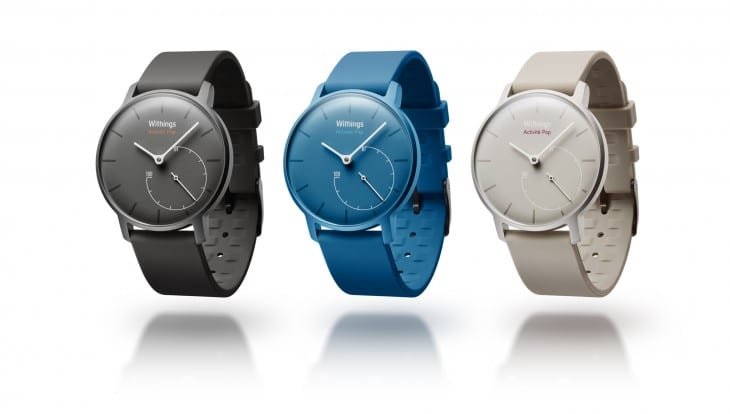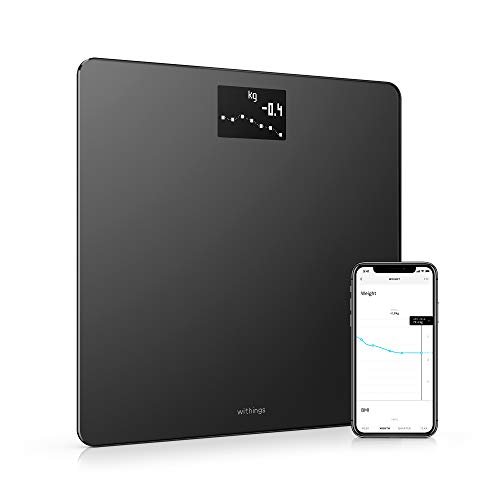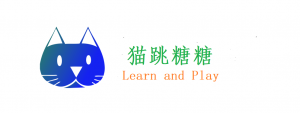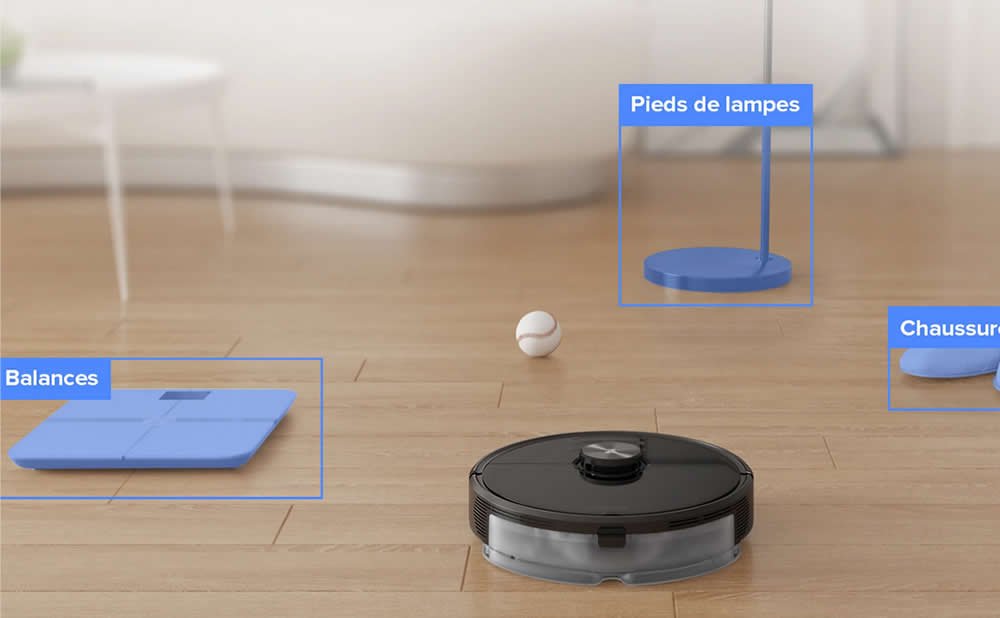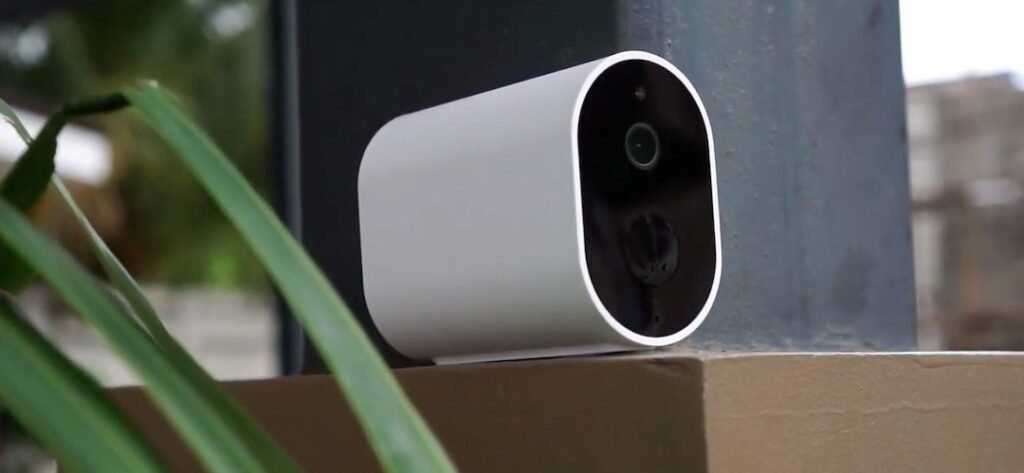After the Suunto 9, the high-end sports watch from Suunto released in 2024, then the Suunto 5, an intermediate model released in 2024, the company offers the Suunto 7, a watch that is both smart health connected and sporty and has nothing to do with the previous models.
Its interest is twofold: to offer, in a single model, a complete Smartwatch thanks to Wear OS, the operating system for watches from Google, and advanced sports functions benefiting from all the experience of Suunto. It is a first in the world of GPS watches and the concept should attract the general public, including athletes.Hurry ? Read here our Suunto 7 review
Features of Suunto 7
70g
Dimensions
50 x 50 x 15.3 mm
Screen
Touch, AMOLED, color, 454 x 454 px, 1.4 ”
Autonomy
12h / 48h / 40d
(GPS / smart health connected watch / Watch modes)
GPS
GPS, GLONASS, QZSS, Beidou, Galileo
True multisports
No
Recommended activities
Running, biking, swimming, hiking (70 sports on board)
Connectivity
iPhone, Android. Wireless Bluetooth, Wi-Fi data transfer
Heart rate monitoring
Yes, optical on the wrist
Topographic maps
Yes
Music player
Yes (via App)
Yes (Google Pay)
Telephony / 4G
–
Barometric altimeter
Yes (automatic calibration and FusedAlti)
Barometer
Yes
Compass
Yes (via app)
Thermometer
–
Weather forecast
Yes (via App)
Waterproof
5 ATM (50 m), usable for swimming and diving
Other
Wear OS (Google assistant, Google Fit, many downloadable apps, music, payment), 70 sports (but no multisport activities), activity tracking (Google Fit), on-board mapping, weather, built-in microphone, interchangeable wristbands, memory 8 GB
Other models
Suunto 5 (mid-range), Suunto 9 (high-end)
Suunto 7 at a glance
The first Suunto watch to run on Wear OS
Suunto innovates with this new watch for mixed use, the first of the brand to operate under Wear OS (formerly Android Wear), Google’s operating system for devices called “wearable” (to wear) like watches. Wear OS is designed to manage small displays and provides access to many intelligent functions such as the Google assistant, a payment solution, the possibility of accessing services on the Internet, weather functions, health monitoring. (Google Fit) and much more.

This advance allows Suunto to offer a versatile watch that can integrate almost any function simply by downloading it from the Google Play Store. Sports features and maps, however, remain integrated in the Suunto Wear app, the brand’s firmware.
The main functions offered
The Suunto 7 has a high resolution AMOLED touch screen (454 x 454 px) 1.4 “in diameter. The technology (see below) is used on Smartphones and Smartwatches like the Apple 5 or the Garmin Venu: it has a GPS compatible with most satellite systems (GPS, GLONASS, Beidu, QZSS, Galileo), an optical cardio on the wrist, a barometric altimeter, a compass (dedicated app). The watch offers 70 sports activities but not multisport (no triathlon profile for example). Its bracelets are interchangeable without tools. It offers a fairly low autonomy (12 h in GPS mode and 48 h maximum in smart health connected watch), which makes it unsuitable for certain sports such as the ultratrail.
Here is a brief outline of this model (we detail them below in this article):
- AMOLED touch screen high resolution (454 x 454 px)
- An optical cardio on the wrist (no possibility to connect a cardio belt)
- GPS GPS, GLONASS, Galileo, QZSS, Beidu compatible
- 70 sports activities on board but no multisport mode (triathlon, etc.)
- Wear OS and access to downloadable apps. New at Suunto, Wear OS provides access to many apps including the famous Google assistant (you can ask questions, access your calendar, request the weather, search for a hotel in the surrounding area, check flight schedules, and much more), a payment solution, downloadable apps.
- Offline mapping and heat maps (routes most used by the community) for 15 sports activities and accessible directly on the watch. The possibility of programming routes from a Smartphone to send them to the watch.
- Wi-Fi for downloading maps, music, and watch updates.
- The music : the watch has 8 GB of memory for storing music tracks and mapping. Listening is done directly from the watch via a download app and Bluetooth headphones. You can also listen to music from a Smartphone controlled from the watch.
- Activity monitoring 24 hours a day via Google Fit
- FusedAlti and FusedSpeed: Suunto-specific functions combining data from several sensors (GPS, barometric altimeter, accelerometer) to improve the quality of altitude and speed measurements. We do not find here FusedTrack (available on Suunto 9) which reconstructs the GPS track in case of absence of signal.
Suunto 7 is not offered in LTE version (4G connectivity). It needs a Bluetooth connection to a Smartphone or a Wi-Fi network to be able to access offline functions like the Google Assistant, map downloads, etc. You can of course use the watch alone for sports activities, access to mapping and listening to music.
Who is Suunto 7 for?
The Suunto 7 has the advantage of offering the best of the 2 types of current GPS watches: sports watches and smart health connected watches. Thanks to this, the Finnish brand, previously only praised by athletes, could now be popular with the general public. It will indeed interest:
- Athletes and competitors (almost all sports) interested in intelligent functions (payment, music, intelligent assistant, various services, etc.) in addition to the functions dedicated to sport.
- The general public looking for a smart health connected watch to wear everyday that offers in addition advanced sports functions.
- People looking for the equivalent of Apple Watch but don’t have an iPhone
Suunto 7 in-depth review
We still only have a partial view of the new Suunto 7, the model is not yet available for sale (except for pre-order). We will complete this article as soon as we have more information and the first tests have been carried out.
Design and technical characteristics
The Suunto 7 is presented in a polyamide case reinforced with a stainless steel bezel and scratch-resistant Corning Gorilla glass. It weighs 70 g, which is 4 g more than the Suunto 5 and 11 g less than the Suunto 9.
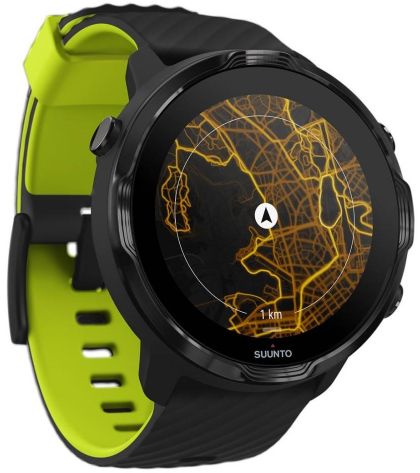
It comes in 3 colors: black and black lime (black case and black and yellow bracelet), White Burgundy (white case and black and white bracelet) and Black (black case and bracelet).
The Smartwatch is resistant to impact and dust. Waterproof up to 50 meters (5 ATM), it can be used while diving. Suunto informs that the push buttons can be used underwater (which is not the case for all waterproof watches).
We particularly appreciate the originality of the watchface installed by default, all in color, which displays the attendance cards of the place where the watch is worn.
The straps are 24 mm wide and interchangeable without tools (one nail is enough). The watch comes with a silicone strap, but Suunto also offers fabric and leather straps to be purchased separately.
On the electronic side, the Smartwatch incorporates the latest Snapdragon Wear 3100 chip from Qualcomm, an energy-efficient processor specially designed for watches. Suunto 7 has 1 GB of RAM and 8 GB of storage capacity for data, topographic maps and music. It offers Bluetooth 5.0 and Wi-Fi connectivity for data transfer.
| Characteristics | Suunto 7 |
|---|---|
| Weight | 70g |
| Case diameter | 50 mm |
| Case thickness | 15.3 mm |
| Screen size | 1.4 ” |
| Screen definition | 454 x 454 px |
| Crowned | Stainless steel |
| Glass | Corning Gorilla |
A high resolution touch screen and AMOLED!
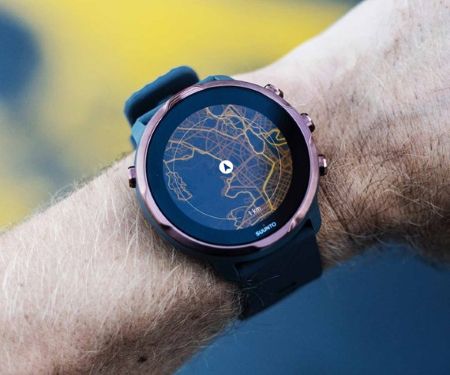
This model offers a high resolution screen (454 x 454 px) to compare to the 320 x 300 px of the Suunto 9, the high-end and exclusively sporty model of the brand. It is tactile, which makes navigation and the use of maps easier. You can however use the buttons in parallel, which is very practical during the activity or even if you wear gloves.
But the great novelty of this model, compared to other Suunto watches, is its AMOLED screen (from the English Active-Matrix Organic Light-Emitting Diode or, in French, active matrix with organic light emitting diodes), an alternative solution to the LCD . Invented in the 90s, the technology is used today in most Smartphones and increasingly in large TVs (the first AMOLED TV was marketed by Sony in 2007). Instead of using liquid crystals which let or not pass the light emitted by a backlight located behind the panel (LCD technique), it uses OLEDs, an improved version of LED (light emitting diode) and a active matrix (individual LED control). The colors are vibrant and their number much higher than that of conventional watch screens. Suunto can display high-quality photos and animations.
The sensors: no compatibility with external sensors
This new Suunto has almost all the sensors that can be found on a high-end watch:
-
- GPS: compatible GPS, GLONASS, Galileo, QZSS (the Japanese system) and Beidu (the Chinese system)

- Optical heart rate monitoring: Suunto uses a Pixart brand sensor. Unlike Polar and Garmin, it works poorly underwater. It also does not offer a pulse oximeter for measuring the blood oxygen level and evaluating acclimatization at altitude. Please note that the watch cannot be coupled to an external cardio belt.
- Barometric altimeter and FusedAlti ™: the watch is equipped with a barometric altimeter, a much more reliable sensor than the GPS for measurements of altitude, elevation gain and climb speed. Suunto goes further by combining this data with that of GPS (FusedAlti & trade algorithm) for increased precision and reliability under the most difficult conditions.
- Accelerometer: the accelerometer makes it possible to evaluate the distances traveled when the GPS signal is weak or in a sports hall (treadmill, etc.).
- Microphone: it allows you to interrogate the Google assistant, get answers to any question, consult the internet, answer incoming SMS (Android only) and much more.
The watch also has an ambient light sensor for managing the screen brightness.
Suunto 7 is not compatible with external sensors. We cannot therefore connect sensors for cycling or running (speed, cadence, power, footpod for example) or even a cardio belt.
Autonomy
The Suunto 7 does not shine by its autonomy with only 2 days in smart health connected watch mode (barely better than the Apple Watch) and 12 hours in GPS mode. It can provide up to 40 hours of battery life in watch mode. To do this, you must activate the energy saving mode (the latter is also activated in the event of a low battery). All the functions are then deactivated except the display of the time and the battery status.
As long as you listen to music while training, with the use of GPS, the autonomy drops to 8 h. Suunto announces up to 18 hours of autonomy for versatile use (smart health connected watch and a little sport), 30 hours for indoor training (therefore without GPS) or 5 hours for outdoor use. The use of cards adds a lot to consumption: it drops to 7 am (instead of 12) if the cards are displayed at the rate of 10 seconds every 3 minutes.
All this is little compared to the 25 h to 120 h (Ultra mode) of the Suunto 9 or even to the 20 to 40 h of the Suunto 5 especially since Suunto does not offer any intelligent battery management on this model. It is therefore not suitable for long outings, such as the ultratrail or the ultramarathon.
It must be said that the AMOLED screen consumes significantly more than a conventional watch screen (MIP for example). Suunto nevertheless succeeds in limiting the impacts by turning off the screen after 10 seconds of inactivity. In terms of hardware, the Snapdragon Wear 3100 processor, the famous Smartwatch chip offered by the company Qualcomm, also helps to minimize consumption.
Suunto announces that 100 minutes are required for a full recharge of its sports smart health connected watch and that 20 minutes are sufficient for a 2 hour workout.
| use | Suunto 7 |
|---|---|
| Watch mode | 40 days |
| smart health connected watch mode | 2 days |
| GPS training | 12 noon |
| Outdoor use | 5 a.m. |
Cartography, heat maps and navigation. Pre-loaded local maps.
The main interest of the Suunto 7, and which should appeal to both athletes and less athletic, is to offer, via the Suunto Wear App, on-board mapping and heat maps for 15 sports activities! We can thus find our way, see our route on the map, follow a route directly on the watch or even take a popular route without the need for a Smartphone and the nearby 4G network.
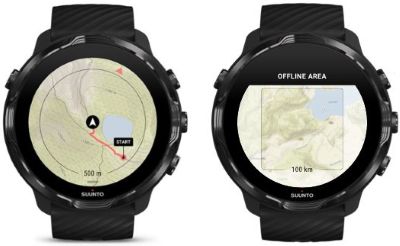
The maps of the place of use are automatically downloaded as soon as the watch is smart health connected to Wi-Fi or to a smart health connected Smartphone. You can also download a map of a given place other than the current position (for example for planned sports outings away from health home). Depending on the region, Suunto can load maps of 35 x 35 km or 50 x 50 km.
In addition to topographic maps, Suunto offers heat maps (or attendance maps) accessible directly from the watch and very easy to read thanks to the comfortable screen (size, resolution and number of colors). The data is directly integrated into the topographic maps, therefore loaded with them. Heat maps display the routes most used by the Suunto community. This functionality is found in Garmin. One can thus practice sports anywhere, even without a planned itinerary, and follow the course frequented by other athletes directly on watch. Suunto offers 15 sports activities! We find in particular running, trail, cycling and mountain biking, hiking, swimming, surfing, paddle, downhill and ski touring, golf …
Regarding navigation, the watch displays the route taken (trace “Petit Poucet”) and displays it on the map if it is present. You can also pre-load a route to follow or follow a route from the heat maps. Please note, the Suunto 7 does not offer turn-by-turn guided navigation or direction indication. It will therefore be necessary to verify that we are following the route by zooming the map and orienting ourselves according to the display and the contour lines. Similarly, there is no function for returning to the starting point (TrackBack). You will have to retrace your steps following the path and zoom in if necessary.
Music on the wrist thanks to Wear OS
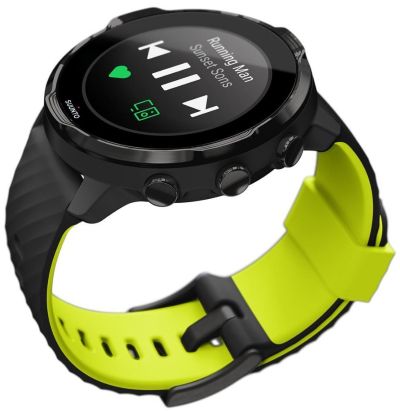
Suunto was lagging behind its competitor Garmin when it came to the smart features of its watches, especially for music. Many athletes like to play sports with music without having to bother with a smartphone. With the new Suunto 7, it’s possible! Music is now accessible on the wrist!
But the difference with Garmin is that it does not carry any mp3 player … Wear OS takes care of everything. Just download a dedicated app from the Google Play Store. It will of course be necessary to download the musical tracks beforehand from a computer or a Smartphone (the watch can store several thousand!) And bring a bluetooth headset or earphones for listening. You can also listen to your music from a Smartphone controlled by the watch.
Google Pay: to pay for purchases with a flick of your wrist
The Suunto 7 incorporates an NFC chip which, associated with a Google Pay account, allows you to pay for your purchases directly from the watch, even without a Smartphone. A practical aspect for doing light sports and without the risk of losing your wallet! For added security, the smart health connected watch does not directly transmit the bank card number but an encrypted virtual account number.
Sports functions and physiological measures
In addition to the intelligent functions provided by Wear OS and the mapping integrated into the Suunto Wear App, the Suunto 7 offers the whole Suunto experience of sports watches:
-
- 70 integrated sports, each with a dedicated profile (2 to 4 displays containing data specific to the sport practiced). On the other hand, the watch is not suitable for multisport (linked activities). For triathlon for example, it would therefore be better to turn to a watch designed for this sport (see our selection of the best current watches for triathlon).
-
- Recording of output data: distance (GPS or cadence based if GPS is not used or if the signal is weak), GPS track, heart rate (including during swimming), atmospheric pressure, altitude, altitude difference, vertical speed, cumulative climbs and descents, etc. The watch also displays graphs for the last hours (altitude profile, heart rate, atmospheric pressure).
- Recovery time (rest time required before resuming a sporting activity)
- PTE (Peak Training Effect) or Effect of training. This indicator provides information on the impact of the outing on performance on a scale of 1 to 5. A score of 1 to 2 indicates that training has improved basic endurance and strengthened the bases. A score of 3 to 4 indicates an impact on aerobic capacity. A score of 5 indicates intense training.
- Target training areas with color gauge indicating the level of effort on a scale of 5 (easy, moderate, difficult, very difficult, maximum)
- A compass to find and orient the paper maps (app running under Wear OS)
- Activity monitoring: it is provided by Google Fit. The function tracks the number of steps, calories expended, heart rate and, more recently, sleep tracking. Points are awarded according to the efforts made. You can program daily goals to reach with alerts and receive invitations to move. Google Fit also offers breathing exercises to relax.
On the other hand, there are almost no race dynamics for runners (contact time on the ground, vertical oscillation, etc.). Garmin does not seem to have integrated the Firstbeat algorithms used to provide physiological data on this model, such as stress level assessment, VO2max or even the Body Resource offered on Suunto 5. Adaptive personalized workouts are not not available either (present on Suunto 5).
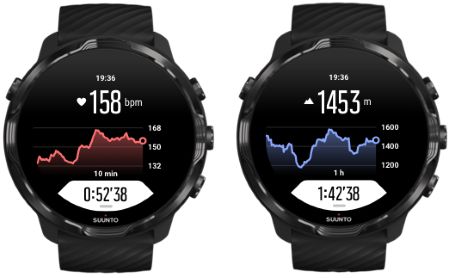
The watch offers functions dedicated to the most common sports:
- Running: recording of pace, cadence, average and maximum lap times. But no complete race dynamics (vertical oscillation, ground contact time, etc.).
- Bike: heart rate and average speed
- Swimming: swimming rhythm, heart rate (wrist), swimming time by length (in the pool), number of movements, swimming efficiency (SWOLF), auto intervals
- Hiking : the watch displays altitude, elevation, vertical speed data using FusedAlti (combination of barometric altimeter and GPS data).
The other functions: Wear OS and multiple possibilities
Suunto 7 offers many Wear OS-specific features, including:

- The Google Assistant which allows you to ask a question, query your calendar, search for information on the Internet, etc.
- Google Fit for activity tracking
- Google Pay to pay for purchases with your watch
- A compass
- Weather functions: daily weather, sunset and sunrise times, sea level pressure, thunderstorm alerts, local temperature, altitude graph, etc.
Thanks to Wear OS, the user will be able to download many apps to complement those already offered by the watch.
Smartphone notifications (emails, calls, SMS) are also present. You can respond to SMS directly from the watch by choosing a predefined message or by using the microphone and voice recognition (with an Android Smartphone only).
Finally, this model allows you to share your results on the main applications such as Strava, Endomondo or TrainingPeaks.
Our opinion on Suunto 7: should you buy it
What is Suunto 7 worth and should you buy it? Is it better to opt for the Suunto 9 if you play sports or even the cheaper Suunto 5? Is it comparable to the Fenix 6 Pro? Does it offer up-to-date sporting functions for seasoned athletes? So many questions that it is legitimate to ask yourself before making a choice.
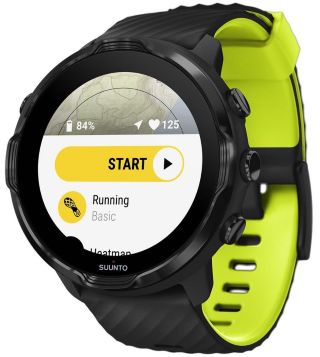
A watch for everyone, including athletes
Mix between Garmin (sports functions) and Apple (smart health connected functions), the Suunto 7 is versatile and complete. First of all, it offers the best of current smart health connected watches with an infinite number of possibilities and possible developments since it works with Wear OS. Just choose and download an app to add functions, knowing that new apps are regularly developed! This makes it a more durable watch than most current GPS watches.
On the other hand, it offers all of Suunto’s experience in terms of sports functions. This is not the case for most smart watches. Confirmed athletes will probably not choose the Apple Watch or the Garmin Venu to go hiking or to run a marathon.
This model is therefore not limited to everyday life. It should also interest athletes.
Finally, the presence of maps and frequentation maps available offline makes it very interesting for activities such as hiking, trail running, outings running, biking or skiing off known trails but also traveling. Still few sports watches offer cartography today. It can be found at Garmin (Forerunner 945, Fenix 6) and Casio. Coros will probably come there (see the Coros watch series here). That said, the GPS navigation does not equal that of the Suunto 5 and Suunto 9 (read below).
The functionalities: still a long way to go for sport and navigation
In terms of smart functions, it’s hard to do better since Wear OS opens the door to all the functions imaginable for a smart health connected watch. That said, Suunto 7 remains limited due to its sensors. For example, it is not equipped with a pulse oximeter as with Garmin and Coros, nor with an ECG as with Apple. We will therefore not benefit from the measurement of the blood oxygen level, nor from the evaluation of the altitude acclimatization or from the ECG. The watch also does not offer assistance in the event of a fall.
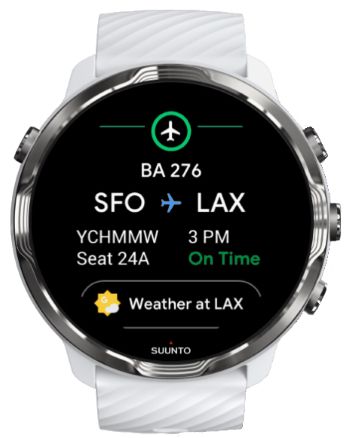
In terms of sports functions, it is very well equipped with its complete sensors (barometric altimeter, barometer, compass, GPS in particular) and 70 on-board sports. We find all the useful functions to which Suunto has accustomed us (display of altitude, elevation, vertical speed, recording of the course and data of heart rate, speed and distance, small thumb track, etc.). The algorithms offered by Suunto (notably FusedAlti) improve the reliability of the measurements. We benefit from all of Suunto’s experience.
On the other hand, like the brand’s other watches, it still does not offer advanced racing dynamics. The recent Suunto 5 offers adaptive personalized workouts. The latter does not seem to offer it. No external sensor can be smart health connected (footpod, power sensor, speed or cadence sensor, cardio belt!), Which limits training (interval training, swimming, etc.). It is also not suitable for triathlon.
Another unfortunate point is that GPS navigation is limited, unlike other Suunto watches of this level. You can see the GPS track on the map, locate paths, assess the difficulty with the contour lines, follow a given route, all offline, which is already considerable, but there is no Trackback function (back to its steps), neither turn-by-turn guidance as at Garmin, nor directional arrow indication as on the Suunto 5 and Suunto 9. You will therefore have to zoom the map to follow a course. Of course, it is also not possible to search for points of interest around you (hostel, restaurant, etc.)
Autonomy: to review
Autonomy is also not the strong point of this watch even if it remains very correct for a smart health connected watch with AMOLED screen. It is not suitable for long outings (ultra-trail, ultra-marathon, long hikes, etc.). In a smart health connected watch, it will need to be recharged every 2 days unless it is used in pure watch mode.
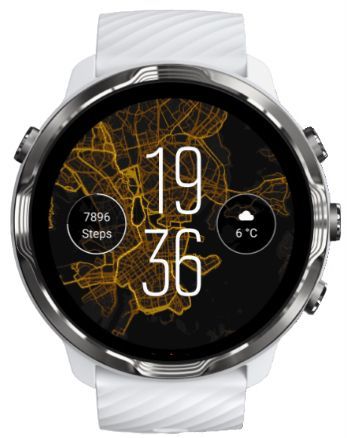
Should you buy Suunto 7 if you have Suunto 5 or Suunto 9?
For owners of a Suunto 5, the Suunto 7 can be a good alternative for many athletes looking for a watch to wear everyday and with smart functions. Provided, however, that you do not need GPS navigation, adaptive training, triathlon mode and good autonomy (20 to 40 hours in GPS mode on the Suunto 5 with intelligent battery management). The Suunto 7 does not bring the evolutions of the Suunto 5 either: assessment of stress, of the Body resource (available body energy) and of VO2max. This ultimately constitutes a number of limitations.
The screen of Suunto 7 is on the other hand much better and one will be able to listen to music during the sport or to regulate purchases from the wrist or to enjoy all the intelligent functions available. For people looking for a versatile model (sport and everyday life), it can represent a good alternative.
If you already have a Suunto 9, the high-end watch in the series, it all depends on the intended use. For triathlon, long hiking trips or trail running, go your way or buy the Suunto 7 as a supplement but not as a replacement. The Suunto 9 (like the Coros series) is the best in terms of autonomy and it offers intelligent battery management. The Suunto 7 is not multisport, has a low autonomy, offers fewer physiological measures and does not offer such complete GPS navigation. The 2 models are therefore not comparable.
Sunto 7 versus Garmin Fenix 6 Pro
Garmin is difficult to match because its sports functions are so complete. The Garmin Fenix 6 Pro offers all the useful sports sensors and functions, including full running dynamics, Training Effect, workout scheduling, advice based on past workouts, and more. Read our detailed review of the Garmin Fenix 6.
The Fenix 6 Pro offers connected functions but they are not based on Wear OS. Therefore, apps cannot be loaded and the available Garmin apps are limited. It has a real mp3 player, a payment solution, complete on-board mapping (roads, cycle paths of the country or continent of purchase), a search engine for popular routes, a generator routes and the ability to search for points of interest around you (hotel, restaurant, etc.).
The GPS navigation is ultra-complete (route tracking with voice guidance, turn-by-turn guidance, return to start). You can also follow a group of sports friends wearing the watch or be followed on the Internet. It offers a fall detection function and assistance in the event of an incident.
In short, The Fenix 6 Pro is very complete but limited in terms of development and downloadable apps.
Verdict
The Suunto 7 is a good sports connected watch offering comprehensive functions, measurements believed to be reliable (testing is yet to be done to confirm this) and the best of current connected functions. It is similar to an Apple Watch but with advanced sports functions and it does not require a Smartphone to be used. However, its design is less attractive to us.
However, it still has to mature to seduce seasoned athletes and competitors. The GPS navigation functions do not equal those of the Suunto 5 or Suunto 9, compatibility with external sensors (cardio belt or armband, power, cadence, speed, footpod) is lacking, adaptive workouts and a number of physiological measurements (VO2max, Body resource, stress) are absent, the triathlon mode is not offered and autonomy greatly limits the possibilities of sporting outings.
We recommend it for all occasional to regular athletes who are looking for a mixed model offering both advanced sports functions and smart functions in a watch for everyday wear.
Pros
Versatile connected and sporty watch complete
Offline mapping (on-board)
Excellent screen (AMOLED, touch, color, high definition)
Music on the wrist
Google Pay payment function
Heat cards for 15 activities
Wear OS: Google assistant, many downloadable apps
Cons
No triathlon mode
Low autonomy
Limited GPS navigation
Firstbeat physiological measurements not offered (VO2max, Body resource, stress)
No possibility to connect external sensors (cardio belt, cadence, speed, power, footpd)
No race dynamics or race time predictor
